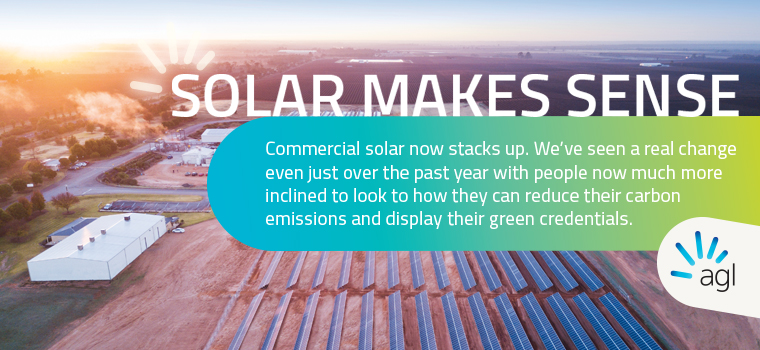NIGEL HOPKINS
AGL Australia’s investments in renewable energy and its commitment to transition to lower emission fuel sources by 2050 have been influential for environmentally-minded winemakers.
As has the potential of lower-cost electricity at more predictable prices to help enable a more cost-effective business future.
“AGL was founded in 1837 and it’s our corporate history that many winemakers can identify with, since they are often from well-established, long-running family-owned companies,” says Doug Landfear, AGL’s Commercial Solar chief. “In addition, we’ve been one of the leaders in the development of renewable energy projects in Australia, first with hydro and wind, and most recently with two of the largest solar power plants in the country at Nyngan and Broken Hill. Our investments and track record in renewable energy gives us enormous experience and insights in the development of energy solutions for business customers.” While solar energy is well established in the residential market, it has only recently begun emerging as an attractive option for businesses.“Until recently, the financial case for businesses to go solar was not very compelling. But now that picture has changed. The cost of solar has fallen at the same time electricity prices have risen and we now find many customers can achieve a simple payback of three-four years on their solar systems,” explains Landfear.
Then there is also increasing awareness of the impact of climate change. As part of its commitment to customers and to a renewable energy future, AGL has established a New Energy division, which Landfear says brings together experts in solar, lighting and energy storage who are focused on innovation and technology to help meet consumers’ energy needs and expectations as the energy landscape transforms. One innovative project the New Energy team is currently involved with is creating the world’s largest residential solar virtual power plant which, once completed, will include 1000 connected batteries installed in metropolitan Adelaide homes, and will have an output equivalent to a 5MW solar peaking plant.

